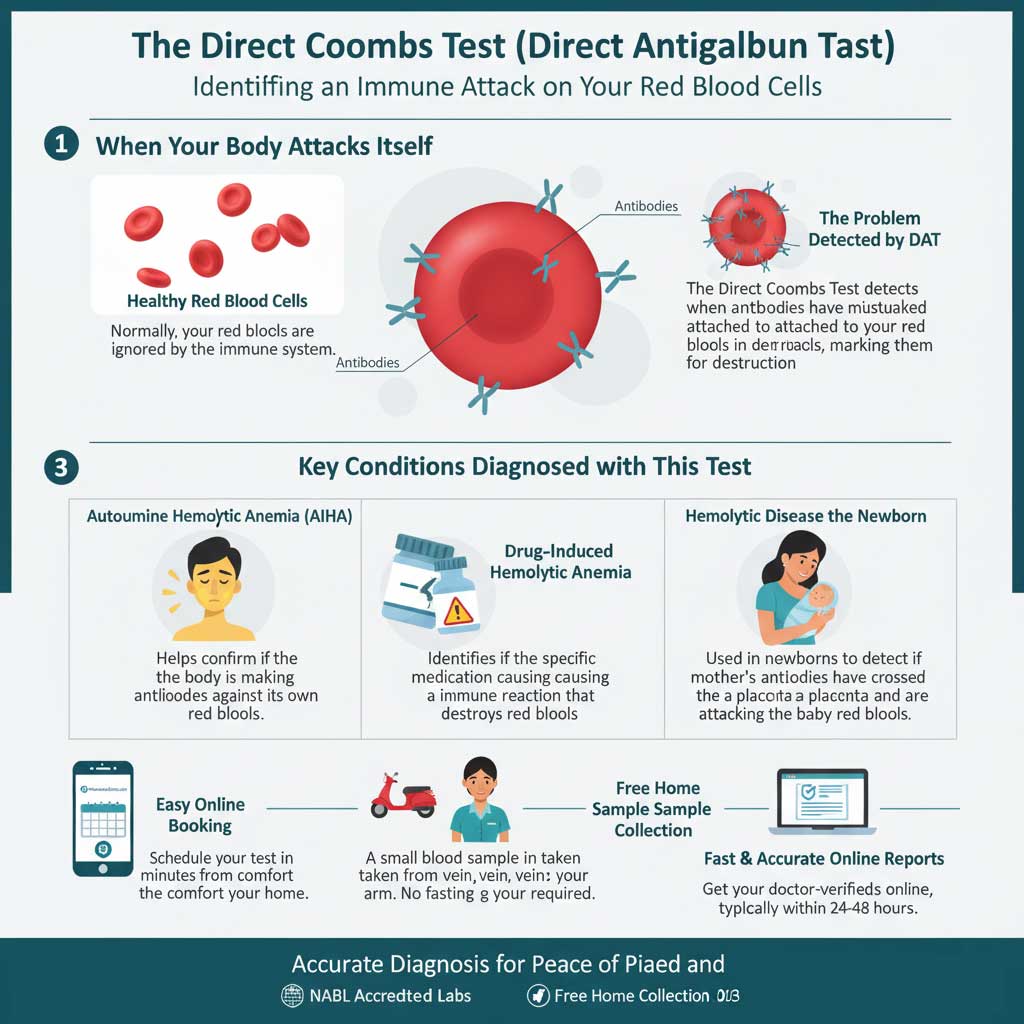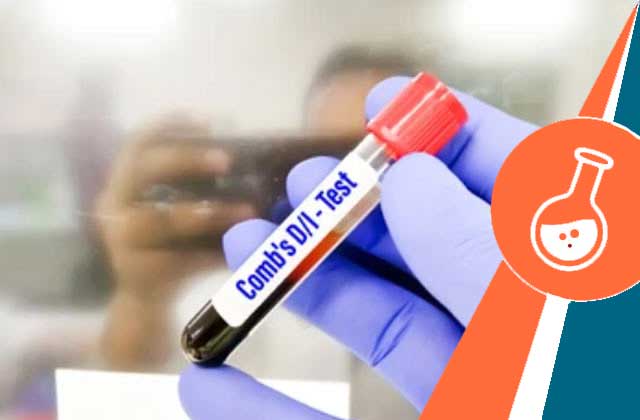
Direct Coombs Test (Direct Antiglobulin) and its Function
The Direct Coombs test, also known as Direct Antiglobulin test (DAT), is a laboratory test used to detect the presence of antibodies or complement proteins that have attached to the surface of red blood cells (RBCs). The test helps in the diagnosis and evaluation of certain immune-mediated conditions, specifically those involving autoimmune hemolytic anemia and drug-induced hemolytic anemia.
Conditions that may require Direct Coombs Test (Direct Antiglobulin)
Autoimmune Hemolytic Anemia (AIHA): AIHA is a condition in which the body’s immune system mistakenly produces antibodies that target and destroy its own red blood cells. The Direct Coombs test is used to detect the presence of these antibodies attached to the surface of RBCs, confirming the diagnosis of AIHA.
Drug-Induced Hemolytic Anemia: Certain medications can trigger an immune response that leads to the destruction of red blood cells. The Direct Coombs test can help identify the presence of antibodies or complement proteins attached to RBCs, indicating a drug-induced immune reaction.
Direct Coombs Test (Direct Antiglobulin) Procedure
The Direct Coombs Test (Direct Antiglobulin) is a simple blood test that can be performed in a laboratory. Before the test, the patient may be asked to avoid certain medications that may affect the results. During the test, our healthcare professional will use a needle to draw blood from a vein in the patient’s arm. The blood sample will then be sent to our laboratory for analysis.
Interpreting Direct Coombs Test (Direct Antiglobulin) Results
Interpreting Direct Coombs test results involves assessing the presence or absence of antibodies or complement proteins on the surface of red blood cells. A positive result indicates the presence of these antibodies or complement proteins, suggesting an immune-mediated destruction of RBCs. Additional tests and clinical evaluation may be required to determine the underlying cause and guide appropriate treatment.
More Related Tests
Why To Book with HealthCareOnTime

17 Crores+ Samples Processed

World Class Technology Labs

25+ Years of Trust & Experience

Free Home Collection
FAQs Around Direct Coombs Test (Direct Antiglobulin)
How much does Direct Coombs Test (Direct Antiglobulin) cost?
The Direct Coombs Test (Direct Antiglobulin) cost is Rs.500, although it is now available for Rs.300 because of the offer.










